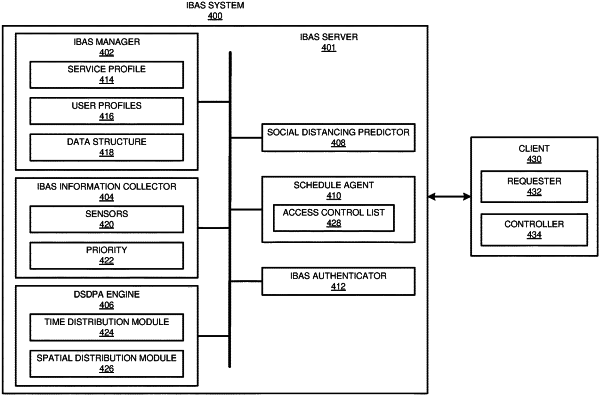| CPC G06Q 10/063116 (2013.01) [G01B 21/16 (2013.01); G06F 16/2477 (2019.01); G06N 5/04 (2013.01); G06N 20/00 (2019.01); G06Q 10/06316 (2013.01); G06Q 10/1097 (2013.01); G06Q 30/04 (2013.01); G06Q 50/26 (2013.01); H04L 63/101 (2013.01)] | 20 Claims |

|
1. A computer-implemented method in an authentication-based access control system (ACS) comprising:
configuring an authentication-based access control system (ACS) with a sensor interface, a machine learning model (ML model), a schedule generation module, and a data structure;
causing the sensor interface to communicate with a set of location sensing sensors over a data network;
detecting using the set of sensors, a location and physical movements of a first worker and a location and physical movements of a second worker in a workspace plan;
generating, by executing the schedule generation module, a first preliminary schedule for a first task assigned to the first worker and a second preliminary schedule for a second task assigned to the second worker;
predicting, by executing the ML model, physical movements of a plurality of workers in the workspace plan, the predicting preventing a generation of worker schedules that are likely to result in workers being located within a distance of less than a threshold value in the workspace plan;
storing in a computer memory location associated with the data structure, a first block of time that is part of the first preliminary schedule and the second preliminary schedule;
generating from the ML model a first location prediction for the first worker during the first block of time;
generating from the ML model a second location prediction for the second worker during the first block of time;
outputting from the ML model a predicted distance between the first worker and the second worker based on the first location prediction and the second location prediction;
revising, responsive to determining that the distance is less than the threshold value, the second preliminary schedule to replace the first block of time with a second block of time that is not part of the first preliminary schedule;
generating an access control list that includes the first preliminary schedule as a first access schedule for the first worker; and
responding to an access query regarding the first worker by referring to the first access control list and determining whether the first access schedule includes a time associated with the access query, the access query being received by the ACS from an access control device configured in the ACS.
|